
views
Before Writing the Abstract

Write your paper. Although the abstract is the very first component of your work, it summarizes what you write about. Hence, have your paper completed beforehand. In order to obtain the best idea of what you will write for your abstract, and precision in representing the content, write your abstract last, once the matters of your paper are settled. Note: Do not confuse an abstract with a thesis. The thesis presents the main idea or question at hand. An abstract is a general overview of the paper, including methods and results.

Review your research paper entirely. Emphasize or accentuate the significant points and record them separately. After you finish going through your paper, review your underlined words or phrases that best portray the research topic, research question, methods, results, and conclusion. This information will be useful when putting together your abstract.
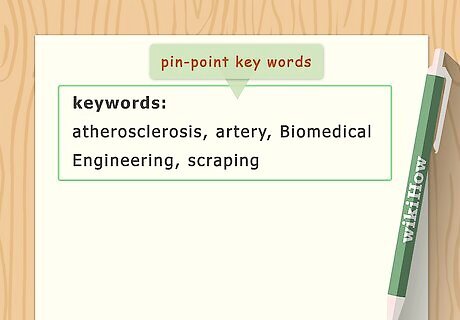
Pin-point keywords. In all online databases, abstracts are found by entering keywords in their search engine. Keep in mind significant keywords that will assist others in search of a paper of the same topic find your paper.

Take into account the audience of your work. Abstracts are purposed to aid those doing research to find your specific paper. In this case, an engineering abstract allows others to effectively consider whether or not the research your paper presents is of use to them. As well, abstracts enable one to express your focal argument efficiently and briefly. Thus, always consider who your audience is when writing your abstract.
Writing the Abstract

State the General Topic: This is where the topic of the study is introduced. It should define the objectives, importance, and context for the study. This is typically done in one or two sentences that tell of the overall topic and its significance. A clear-cut way of doing this is by associating the reason you carried out these experiments with your particular area of research. For example: “Artery biomechanics may play an important role during the development of atherosclerosis. Artery stiffness is used clinically to predict atherosclerosis risk; however, laboratory testing of whole arteries has produced ambiguous results. Atherosclerotic plaques extend through only part of the vessel wall; consequently, an accurate description of the biomechanics of atherosclerosis will require testing of local mechanical properties.” (Biomedical Engineering: Method to Expose Arterial Sub endothelium for Indentation Testing by John M. Peloquin; Advisor: Cynthia Reinhart-King)
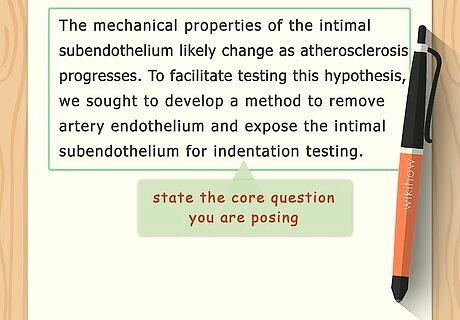
Specify the Question or Relationship: In one or two sentences, state the core question you are posing or relationship you are examining with this research. Take account of the hypothesis and objective or goal of the research. For example: “The mechanical properties of the intimal subendothelium likely change as atherosclerosis progresses. To facilitate testing this hypothesis, we sought to develop a method to remove artery endothelium and expose the intimal subendothelium for indentation testing.”
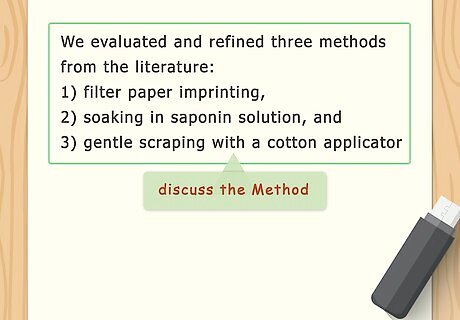
Discuss the Method: Unfold the steps of your research in two to three self-explanatory sentences. There is no need to give ample detail; keep it brief and to-the-point. For example: “We evaluated and refined three methods from the literature: 1) filter paper imprinting, 2) soaking in saponin solution, and 3) gentle scraping with a cotton applicator.”
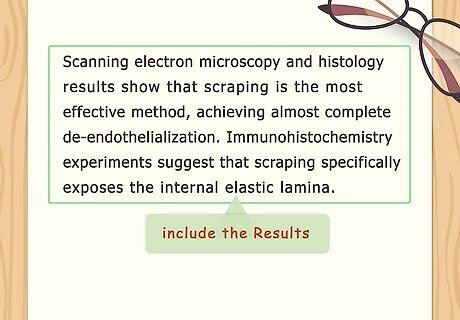
Include the Results: In two to three sentences, clarify your findings from your research, through the steps you have taken. Be sure to only include the key points that concern the objective you have mentioned. For example: “Scanning electron microscopy and histology results show that scraping is the most effective method, achieving almost complete de-endothelialization. Immunohistochemistry experiments suggest that scraping specifically exposes the internal elastic lamina.”
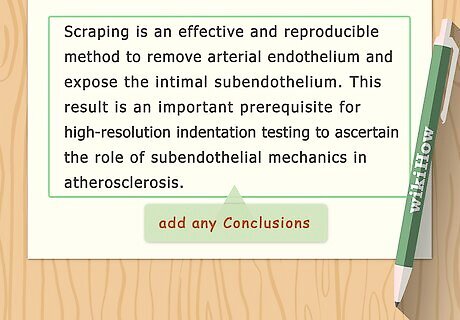
Add any Conclusions: Put in a nutshell your findings about the general topic, question, or relationship in one or two sentences. Be clear in describing how the results have contributed to the domain of the paper’s content. For example: “Scraping is an effective and reproducible method to remove arterial endothelium and expose the intimal subendothelium. This result is an important prerequisite for high-resolution indentation testing to ascertain the role of subendothelial mechanics in atherosclerosis.”
After Writing the Abstract
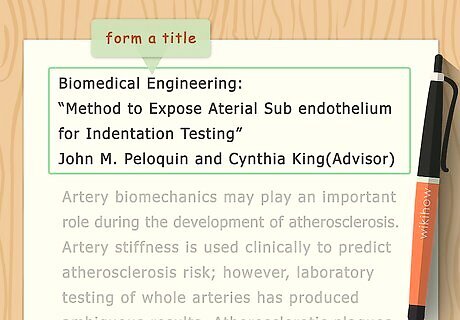
Form a title for your abstract. The title you choose should abbreviate the abstract and convince potential readers that this paper is vital, applicable, and groundbreaking. Remember, the abstract title can also the same as that of your paper. Under the title, include your name, institution you are a part of, and important contact information.

Read your abstract out to yourself and assess precision and flow. Try to be short and concise, but also be sure to let it transition steadily from one sentence to the next, throughout. Integrate applicable transition words, such as “however” or “moreover”. Make sure you have represented all the information in your paper correctly and lucidly. Ask yourself, as if another reader: Would I read this paper, judging the abstract?

Proofread your work. An effective way to edit your abstract would be by printing it out and making changes on the physical copy. Keep in mind that your delivery, including your diction and flow, has to do a lot with the readers' insight of your work. Effectual structure, precise grammar, spelling, and punctuation, and writing mechanisms are imperative features of a successful abstract.
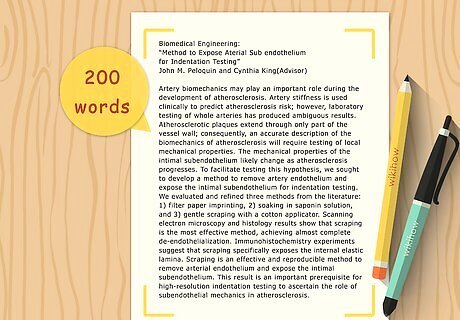
Carry out a word count. Do not make your abstract too length, and too short. In this case, aim for around 300 words.

Get feedback. Asking someone to look over your abstract is the best way to make sure it is clear enough for them to follow and identify your efficiency of representing the content of your paper. Tell them to report what they thought was unclear or the abstract was lacking. This way, you will be able to portray your main ideas in the most understandable way. Try to consult a professor, colleague, classmate, or tutor in the field


















Comments
0 comment